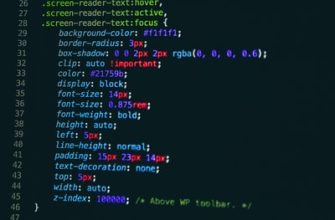If you are a web designer or developer, then you probably have heard about search engine robots. There are many different types, and they do different things. Fortunately, if you know how they work, you can control their behaviour, and get the most out of your website.
Crawl demand
Crawl demand is a complex mechanism Google uses to determine how much of its search engine robots should spend on each page of a website. The goal is to discover content that is relevant to users.
When determining how much of its robots should spend on a webpage, Google takes into account factors such as popularity, freshness, and links. These factors can lead to faster indexing of SEO-relevant pages.
While a large amount of pages can be crawled at once, there is a limit to the number of pages a site can visit. This limit is often determined by server capacity. If the crawling of a particular site becomes too heavy, the bot will decrease its visits.
In addition to determining how many crawls a site can handle, a webmaster can also alter the limit in the Google Search Console. A crawl rate limit is intended to prevent an increase in errors and load time issues.
When determining how many crawls a page can be indexed, a webmaster must take into account the site’s server capacity. If a page has a lot of dynamic elements, Google may not be able to index it. In this case, reducing the size of the site map can help.
Crawl directives
Crawl directives for search engine robots help to control the indexing of pages and websites. These instructions are usually implemented through an X-Robots-Tag HTTP header. The directives can be applied to all user-agents or to certain bots. This makes it easier to specify how a page should be crawled.
A robots directive is a code in HTML or XML that tells a crawler how to index a page. It can also be used to discourage crawling. For instance, it can be used to limit the number of URLs that are indexed in a given period of time. It can also be used to keep a particular page out of an index or to stop a URL from appearing in a search results list.

Crawl-delay is another directive that limits the frequency of a URL’s visits. It can be set to between one and thirty seconds. This can help to slow down the crawling process and keep the server from straining.
Meta directives
Meta directives are codes that are placed in the HTML code of a page. These codes are used to control how search engines index that page. This gives SEOs more control over how their pages show up in search results.
There are two ways to use these tags. The first is to add them to your site’s configuration file. The second is to use HTTP headers. In this method, the robots tag is added to an existing URL. The crawlers are then notified of your preferences.
Meta robots are commonly used to block certain types of content from being indexed. However, you don’t have to use them for every page. If you’re only concerned with certain aspects of a page, you may want to use the x-robots-tag instead.
The meta robots tag can include multiple parameters. It can be combined with other directives to achieve the desired effect. The noindex, nofollow, and noydir directives are just a few examples of these.
Drop down menus
Drop down menus are common user interfaces for the web. The menus allow users to find information on a website, and help visitors avoid the scrolling process. This is useful for both visitors and site owners. However, there are some disadvantages to using drop down menus.
One of the biggest problems is that search engine robots can’t see the menus. The bots only see the HTML outline. This means that they can’t see the images or JavaScript on the page. This makes it difficult for them to index the content.
While it’s important to make your site navigable for the search engine bots, you also want to consider your site’s usability. You don’t want to confuse your site visitors or send them to the wrong place. The best way to avoid this is to design a drop down menu that’s simple and functional.
While it’s important to have a usable drop down menu, it’s also essential that you limit the options you provide. This will ensure that you don’t dilute the relevance of individual pages. You should also use analytics to determine the most important navigation items.








